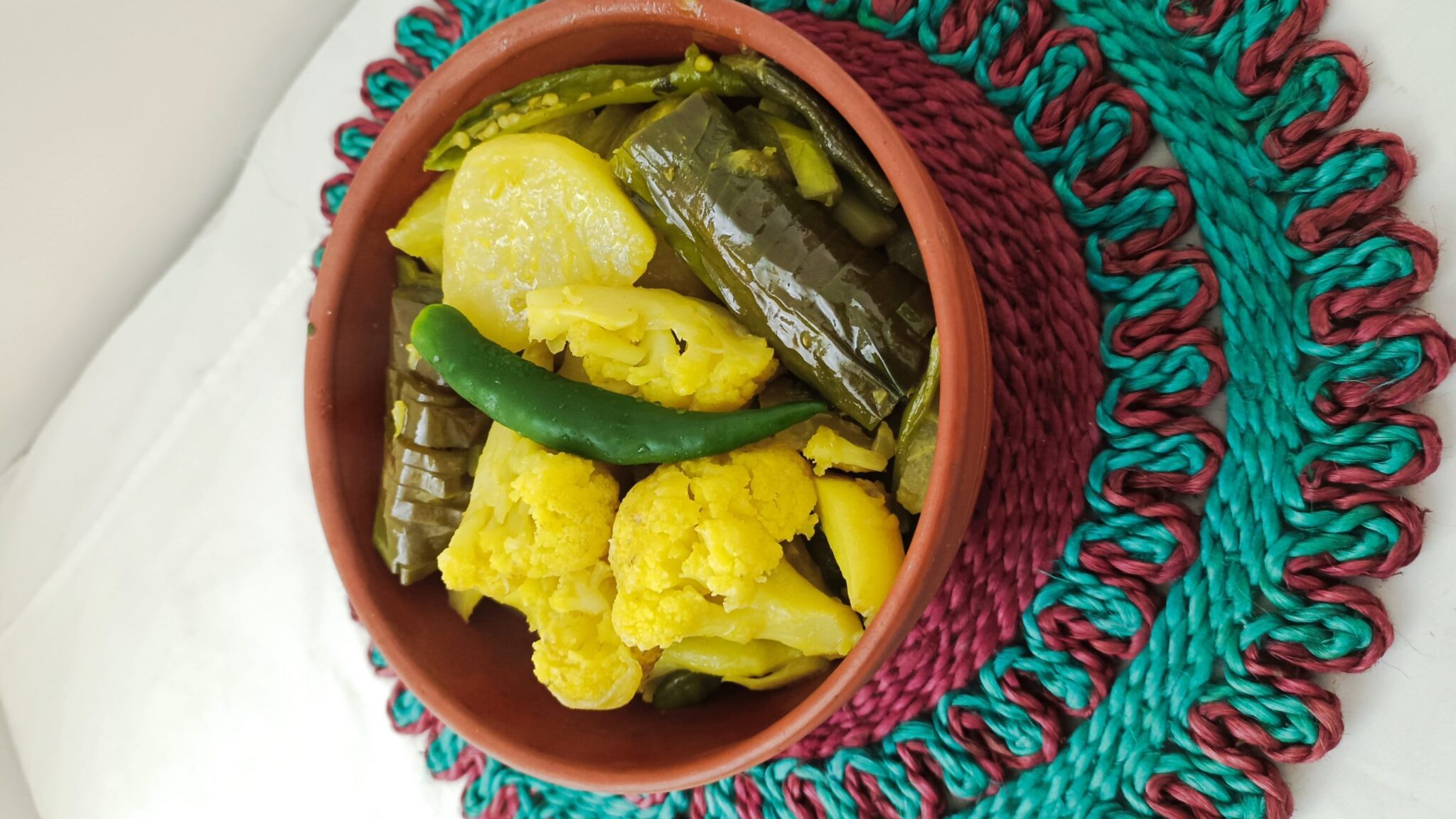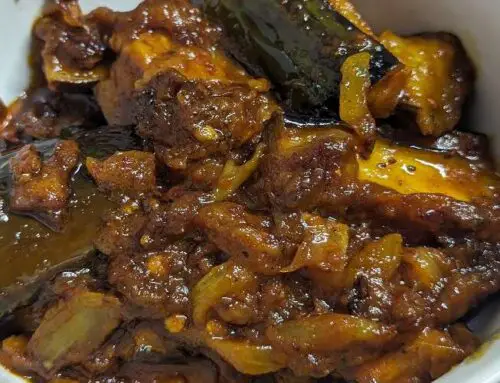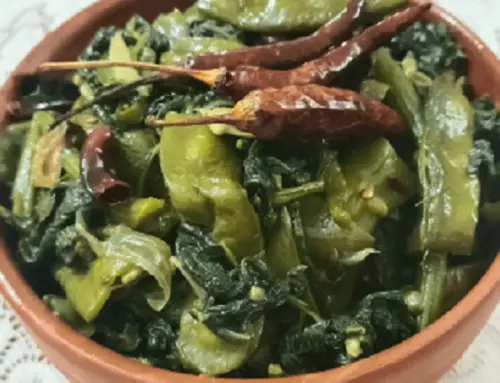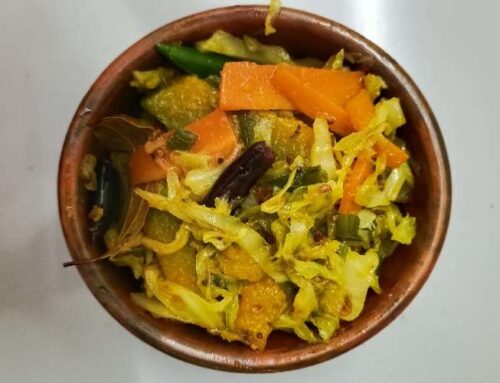Even though I have a penchant for Bangladeshi cuisine’s diverse range of delightful dishes, I was never a fan of Bengali vegetable recipes. Yet, my mind changed when I stumbled upon a small, unassuming restaurant tucked away in a narrow alley during my visit to Dhaka. Drawn by the aroma of the spices wafting through the air, I ventured inside. I discovered a treasure trove of authentic Bengali vegetable curry- “Niramish,” a Bengali term meaning vegetarian, became my instant favorite.
Since then, I have tried to replicate the traditional Mixed Vegetable, aka Niramish I had. With its vibrant flavors, aromatic spices, and a touch of nostalgia, this simple dish satisfies the taste buds and brings back memories of simpler times in Bangladesh. In this article, I will share the tricks and tips I learned through my journey to create the perfect Mixed Vegetable Niramish- a traditional Bengali dish that has stood the test of time.
Mixed Vegetable Niramish is a vegetarian dish that exemplifies the art of balance and harmony in Bengali cuisine. It is a melange of fresh vegetables cooked with aromatic spices, resulting in a symphony of flavors. The recipe changes depending on the season as it incorporates seasonal vegetables such as potatoes, carrots, papaya, cauliflower, peas, beans, and many more.
The vegetables are carefully chopped and put in the curry to retain their natural texture. You can’t just throw all of them together, making the delicate veggies mushy and the harder ones half-boiled. Also, the secret lies in the tempering of spices, which elevates the taste to a whole new level. A mix of panch phoron- a blend of five spices including fenugreek seeds, nigella seeds, cumin seeds, black mustard seeds, and fennel seeds- is gently roasted to release their fragrance. This tempering process adds depth and complexity to the dish, infusing it with a unique Bengali essence.
There are days when I mess up the niramish by either blanching the vegetables too much or too little or roasting the spices to the point that the curry feels bitter. However, on the days I did it right, a rush of nostalgia washed over me as I took my first bite of the Mixed Vegetable Niramish. The flavors transported me back to the streets of Bangladesh- reminiscing about the simple yet heartwarming meals.
The veggies’ crunchiness is a delightful contrast to the rich and aromatic spices. Accompanied by a plate of fragrant steamed rice and a side of tangy tomato chutney, the Niramish meal was a wholesome experience. Moreover, the Mixed Vegetable niramish also works well with roti- you can batch cook and eat it with all your meals.
The combination of textures and flavors creates a perfect harmony, showcasing the culinary expertise passed down through generations in Bangladesh. Apart from its delicious flavors and nostalgic appeal, Mixed Vegetable Niramish offers numerous health benefits due to its nutritious ingredients and cooking methods. Let’s explore some of these benefits:
- Rich in Nutrients: Mixed Vegetable Niramish is packed with seasonal produce, each offering its unique nutritional profile. Vegetables like carrots, peas, cauliflower, and beans are excellent sources of vitamins, minerals, and dietary fiber. These nutrients play a crucial role in supporting overall health and well-being.
- High in Dietary Fiber: The presence of fiber in the dish promotes good digestion and helps maintain a healthy digestive system. It aids in regulating bowel movements- preventing constipation, and reducing the risk of digestive disorders.
- Low in Calories: Mixed Vegetable Niramish is a low-calorie dish, making it suitable for those seeking to manage weight. The abundance of vegetables provides satiety without adding excessive calories, making it an ideal choice for a healthy and balanced diet.
- Antioxidant-Rich: Many vegetables in the dish are loaded with antioxidants. These potent compounds help protect the body against free radicals, unstable molecules that can cause cell damage and contribute to chronic diseases like cancer and heart disease.
- Supports Heart Health: Vegetable dietary fiber and antioxidants help reduce cholesterol levels, maintain healthy blood pressure, and promote cardiovascular health.
- Boosts Immunity: The combination of various vegetables in Mixed Vegetable Niramish provides a wide range of vitamins, minerals, and antioxidants that support a healthy immune system. These nutrients help strengthen the body’s defense mechanisms and protect against common illnesses.
- Diabetes-Friendly: The low glycemic index of the vegetables used in this dish makes it suitable for individuals with diabetes. The gradual release of sugars into the bloodstream helps regulate blood sugar levels and prevents spikes, making it a healthy choice for diabetic individuals.
- Promotes Digestive Health: The presence of fiber-rich vegetables aids in maintaining a healthy digestive system. It promotes regular bowel movements, prevents constipation, and supports the growth of beneficial gut bacteria, thereby enhancing overall digestive health.
- Weight Management: Due to its low-calorie and high fiber content, Mixed Vegetable Niramish can be beneficial for weight management. The fiber helps increase satiety, reducing the chances of overeating and promoting a feeling of fullness.
- Provides Essential Nutrients: Mixed Vegetable Niramish incorporates a variety of vegetables, ensuring a diverse range of essential nutrients like vitamins, minerals, and antioxidants. These nutrients are vital for maintaining overall health, supporting bodily functions, and preventing nutrient deficiencies.
Mixed Vegetable Niramish is a testament to Bangladesh’s rich heritage and culinary traditions. With its vibrant colors, aromatic spices, and versatile textures, this dish encapsulates the essence of Bengali cuisine. Whether enjoyed at home, in a traditional eatery, or amidst the bustling streets of Dhaka, Niramish delights the senses and brings back cherished memories of simpler times.
In a world where vegetarian cuisine is gaining increasing recognition, Mixed Vegetable Niramish is a shining example of the wonders that can be achieved without meat. It reminds us of simplicity, balance, and respect for nature’s bounty. So, the next time you are pondering what to cook, try the Mixed Vegetable Niramish.
Ingredients
- 500 grm vegetables Aubergine, Bean, Potato, Cauliflower, Radish, Kohlrabi
- 1 tsp turmeric powder
- 1 tsp red chili powder
- 1 cup onion chopped
- 1/3 cup mustard oil
- salt as per taste
- 3/4 pcs green chili
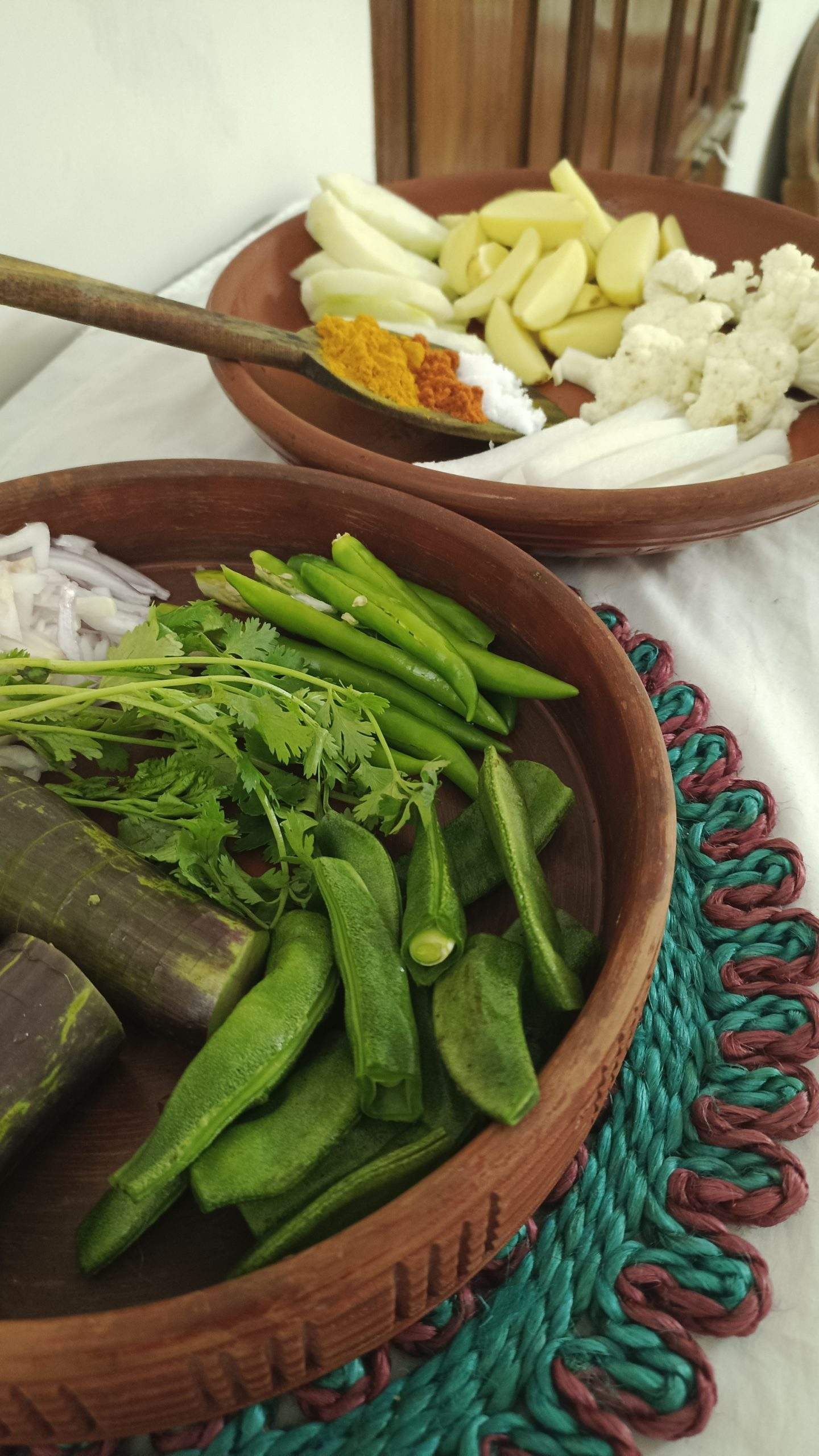
Instructions
- Clean the vegetables properly and cut them.
- Boil the radish and kohlrabi for 10 minutes (These vegetables take more time to boil)
- Heat a pan and add some oil to it. Add chopped onion and fry it until brown.
- Add turmeric powder and red chili powder. Add 1/2 cup of warm water.
- Add all the vegetables and salt. Cook it for 10 minutes. Add 1/2 cup warm water if needed.
- Add green chili and cover the pan with a lead. Cook it for more than 10 minutes. Serve the dish with bread or white rice.
Nutrition

